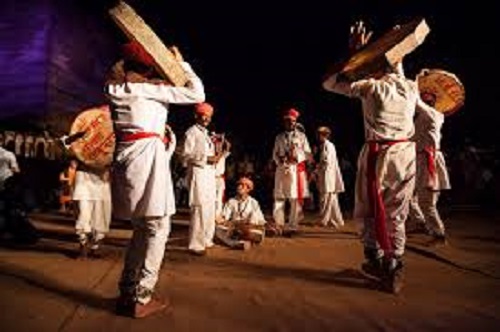
|
Chang is a percussion instrument in the form of a
rounded, flat drum, the beats of which characterize
this genre and give it its name. Chang Nritya is
native to the Shekhawati Region of the state of
Rajasthan and is a dance style performed and enjoyed
at the level of the social collective such that it
above any class or community divide. People from
Rajputs, Meghwal, Brahmin, Khati and Harijan
communities all freely participate in the
celebration. Traditionally indulged in at the time
of Holi- the Indian festival of colors this dance is
more a participatory festivity than a staged show.
There is a wonderful informality about it as group
of young boys carrying the Chang come to dance and
enjoy. Traditionally a male dancer dresses up to
personify a female while the rest of the group
dances around. Accompanied by folk songs that are
inspired by the beginning of the spring season or
Falgun and express the themes of devotion, love,
marriage celebrations and even alcohol consumption,
the genre is set to the music of Chang, Bansuri
(flute), Ghunghroo (ankle bells), Manjeera & Dholaki.
At times also referred to as the dhamaal- loosely
translating to a group having a good time- Chang
Nritya is popular in the Churu, Sikar and Jhunjhunu
regions of Rajasthan. The notes of the Bansuri
brings to mind countryside music forms and to the
Indian psyche are reminiscent of the love stories of
Krishna playing the flute for his beloved Radha. A
down-tempo rhythm pattern on Chang makes for a soft,
soothing and easy listening folk tune which is an
exception in the Indian festive music genre that is
usually upbeat and fast in rhythm. |

